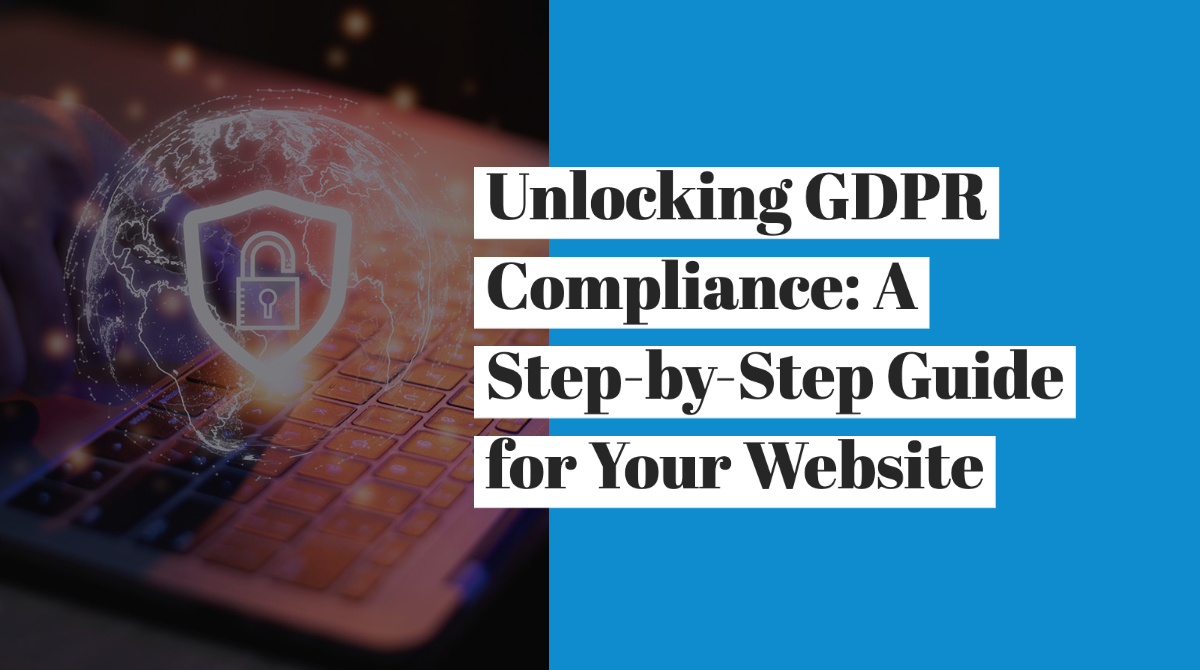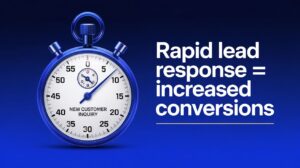In today’s digital age, where data flows freely and privacy concerns are at the forefront of users’ minds, ensuring your website’s compliance with the General Data Protection Regulation (GDPR) is paramount. The GDPR has revolutionized how businesses handle personal data, placing greater emphasis on user rights, transparency, and accountability. Whether you run an e-commerce platform, a blog, or any type of online presence, understanding and implementing GDPR compliance is no longer optional – it’s a necessity.
In this guide, we will delve into the intricacies of making your website GDPR compliant. We will demystify the terminology, break down the core principles, and provide you with a step-by-step roadmap to achieve and maintain GDPR compliance. From obtaining user consent to secure data storage, from handling data breaches to conducting audits, we’ve got you covered. By the end of this journey, you’ll not only have a comprehensive understanding of GDPR, but you’ll also be equipped with the knowledge and tools to navigate the complex world of data protection with confidence.
Join us as we unlock the doors to GDPR compliance, ensuring that your website not only respects user privacy but also builds trust in an era where data security matters more than ever.
Understanding GDPR Basics
In the realm of data protection, the General Data Protection Regulation (GDPR) stands as a pivotal framework that governs how personal data is collected, processed, and stored. To successfully navigate the landscape of GDPR compliance, it’s crucial to first grasp the fundamental concepts and terminology that underpin this regulation.
Key GDPR Terminology
To begin, let’s decode some of the essential terms you’ll encounter while working towards GDPR compliance:
Data Controller and Data Processor
Understanding the distinction between these roles is essential. The data controller determines the purposes and means of data processing, while the data processor carries out processing activities on behalf of the controller.
Personal Data
Any information that relates to an identified or identifiable individual falls under the category of personal data. This can encompass everything from names and email addresses to more sensitive details like health information and racial or ethnic background.
Consent
One of the cornerstones of GDPR is obtaining clear and affirmative consent from individuals before processing their personal data. Consent should be specific, informed, and freely given.
Core Principles of GDPR
At the heart of GDPR are a set of principles that guide how personal data should be treated throughout its lifecycle:
Lawfulness, Fairness, and Transparency
Data processing must have a lawful basis, be conducted fairly, and individuals must be informed about how their data will be used.
Purpose Limitation and Data Minimization
Personal data should only be collected for specific, legitimate purposes and not be used in ways that are incompatible with those purposes. Additionally, only the minimum necessary data should be collected.
Accuracy
Data should be accurate and kept up to date. Efforts should be made to rectify or erase inaccurate data promptly.
Storage Limitation
Personal data should be stored for only as long as necessary for the specified purpose.
Integrity and Confidentiality
Security measures must be in place to protect data from unauthorized access, loss, or damage.
Accountability
Controllers are responsible for demonstrating compliance with GDPR principles and must be able to show how they are adhering to the regulation.
Gaining a solid grasp of these terms and principles is the foundation upon which GDPR compliance is built. With this understanding in place, you’re ready to embark on the journey towards making your website GDPR compliant.
Steps to Achieve GDPR Compliance
Achieving GDPR compliance involves a strategic approach that encompasses multiple facets of data management, user communication, and accountability. Let’s break down the essential steps you need to take to ensure your website aligns with GDPR requirements.
1. Assessing Data Processing Activities
Before you can make your website GDPR compliant, you need a comprehensive understanding of how and why you process personal data. This step involves:
Data Mapping
Identify all the points where personal data is collected, processed, and stored within your website’s ecosystem.
Purpose Identification
Clearly define the purpose for collecting and processing each type of personal data. Ensure it aligns with GDPR principles.
2. Obtaining User Consent Effectively
Consent is a cornerstone of GDPR compliance. It’s crucial to gather user consent in a clear, informed, and user-friendly manner:
Unambiguous Consent
Ensure that users explicitly opt-in to the processing of their data, with a clear understanding of what they are agreeing to.
Granular Consent Options
Provide users with options to consent to different types of data processing, allowing them to choose the level of data sharing they are comfortable with.
3. Handling Sensitive Data and Special Categories
Certain types of personal data, such as health information or racial background, are considered sensitive and require heightened protection:
Explicit Consent for Special Categories
Processing sensitive data requires explicit consent from users. Clearly communicate why you need this data and how you intend to use it.
Enhanced Security Measures
Implement robust security measures to safeguard sensitive data against unauthorized access and breaches.
4. Providing Clear Privacy Notices and Policies
Transparency is a core principle of GDPR. Users should have easy access to information about how their data is handled:
Privacy Policies
Draft a comprehensive privacy policy that outlines data processing practices, purposes, and user rights.
Clear Communication
Present privacy notices in a concise, easy-to-understand format, highlighting key points for users.
5. Ensuring Data Subject Rights
GDPR grants individuals certain rights over their personal data. Your website should facilitate these rights:
Access and Rectification
Users should be able to access their data and request corrections if inaccuracies are found.
Right to Erasure (‘Right to Be Forgotten’)
Users have the right to request the deletion of their data under certain circumstances.
Data Portability
Users can request their data in a machine-readable format to transfer it to another service.
6. Implementing Secure Data Storage and Transfer
Protecting user data throughout its lifecycle is paramount:
Encryption
Use encryption techniques to secure data both in transit and at rest.
Regular Security Audits
Conduct regular security audits to identify vulnerabilities and address them promptly.
7. Conducting Data Protection Impact Assessments (DPIAs)
For high-risk processing activities, conduct DPIAs to assess and mitigate potential privacy risks.
8. Appointing a Data Protection Officer (if required)
If your website’s data processing activities warrant it, appoint a Data Protection Officer (DPO) to oversee GDPR compliance.
By following these steps, you’ll be well on your way to achieving GDPR compliance for your website. Remember, GDPR compliance isn’t a one-time task but an ongoing commitment to data protection and user privacy.
Implementing GDPR-compliant Practices
Building a GDPR-compliant website requires more than just ticking off a checklist. It involves integrating best practices into your data handling processes and fostering a culture of privacy-consciousness. Let’s explore the key practices you should implement to ensure lasting compliance.
Creating and Maintaining a Data Inventory
Understanding your data landscape is essential for effective compliance:
Data Mapping
Continuously update your data map to include new data flows and processing activities.
Data Classification
Categorize data based on its sensitivity and the purposes for which it’s processed.
Establishing Procedures for Data Breaches
Data breaches can happen despite the best precautions. Be prepared to respond effectively:
Incident Response Plan
Have a clear plan in place for detecting, reporting, and mitigating data breaches.
User Notifications
Notify affected users promptly and transparently if a breach occurs.
Training Employees on GDPR Compliance
Your team plays a pivotal role in maintaining compliance:
Awareness Training
Educate employees about GDPR principles, data handling practices, and their responsibilities.
Data Protection Culture
Promote a culture of privacy awareness where employees prioritize data protection.
Conducting Regular Compliance Audits
Regular assessments ensure your practices remain aligned with GDPR:
Internal Audits
Periodically review your data processing activities and documentation for compliance gaps.
Third-party Audits
If using third-party services, ensure they also adhere to GDPR principles.
Partnering with GDPR-compliant Third-party Vendors
If you share data with external partners, ensure their practices align with GDPR:
Vendor Assessments
Assess vendors’ GDPR compliance measures before sharing data with them.
Data Processing Agreements
Establish clear agreements outlining each party’s responsibilities regarding data protection.
Adopting these practices will solidify your commitment to GDPR compliance. Remember, compliance is not a static state but an ongoing effort to safeguard user data and uphold their rights.
Tools and Resources for GDPR Compliance
Navigating the complex landscape of GDPR compliance can be made easier with the help of specialized tools and resources. Whether you’re a seasoned professional or new to the world of data protection, these tools can streamline your efforts and ensure accuracy in your compliance journey.
Data Privacy Compliance Tools and Software
Several software solutions are designed to assist you in managing and maintaining GDPR compliance:
Data Mapping Tools
These tools help you visualize and manage the flow of personal data within your organization.
Consent Management Platforms
Automate consent collection and management, ensuring transparency and user control.
Data Protection Impact Assessment (DPIA) Tools
Simplify the process of conducting DPIAs for high-risk data processing activities.
Templates for Privacy Policies and Consent Forms
Crafting clear and comprehensive privacy policies and consent forms is critical:
Privacy Policy Templates
Use templates as a starting point for drafting a privacy policy tailored to your website’s data practices.
Consent Form Templates
Design consent forms that clearly communicate data processing purposes and obtain informed consent.
Online Resources and Guides
The internet offers a wealth of free resources to enhance your understanding of GDPR compliance:
Official GDPR Websites
Refer to the official GDPR website for authoritative information, guidelines, and updates.
Blogs and Tutorials
Many experts and organizations provide detailed blogs and tutorials on various aspects of GDPR compliance.
GDPR Training and Courses
Online courses can deepen your knowledge and skills related to GDPR:
Online Training Platforms
Explore courses that cover GDPR fundamentals, compliance strategies, and case studies.
Workshops and Webinars
Participate in virtual workshops and webinars led by GDPR experts.
By leveraging these tools and resources, you can navigate the intricate nuances of GDPR compliance more effectively, ensuring that your website remains in alignment with evolving data protection standards.
Real-world Examples of GDPR Compliance
Learning from real-world examples can provide valuable insights into successful GDPR compliance implementations. These examples showcase how organizations have embraced GDPR principles to enhance user privacy and trust.
1. Transparency and Consent – Klarna
Klarna, a leading e-commerce payment solutions provider, revamped its user interface to offer transparent consent options. They provide users with granular control over data sharing, allowing them to choose the types of data they are comfortable sharing. This approach not only aligns with GDPR’s emphasis on informed consent but also builds user trust in their platform.
2. Data Subject Rights – Google
Google’s “My Account” feature exemplifies the facilitation of user data rights. Users can easily access, review, and manage their personal data stored across various Google services. This level of access empowers users to exercise their rights, such as data portability and erasure, while demonstrating Google’s commitment to GDPR compliance.
3. Accountability and Security – Microsoft
Microsoft’s data privacy compliance journey emphasizes accountability and security. They provide comprehensive resources, including GDPR-specific documentation and guidance for their cloud services. Their commitment to compliance extends to their contractual agreements with customers, where they outline their responsibilities as a data processor.
4. Cross-border Data Transfer – Facebook
Facebook employs mechanisms like Standard Contractual Clauses (SCCs) to ensure lawful cross-border data transfers. By adopting SCCs, Facebook demonstrates its commitment to data protection, especially in light of the complexities associated with global data flows.
These examples underscore that GDPR compliance is not just a regulatory obligation but an opportunity to foster user trust and enhance data management practices. By drawing inspiration from such real-world cases, you can tailor your compliance efforts to align with your website’s unique needs and user expectations.
Challenges and Common Pitfalls
While the journey toward GDPR compliance offers significant benefits, it’s not without its challenges and potential pitfalls. Being aware of these challenges can help you navigate them effectively and ensure a smoother compliance process.
Complex Regulatory Landscape
GDPR compliance involves navigating intricate legal language and interpreting its implications for your specific website and operations.
Data Subject Requests Overload
Handling data subject requests, such as access and erasure requests, can become overwhelming if not managed efficiently.
Third-party Compliance
Ensuring that all third-party services you integrate with your website also adhere to the data privacy rules can be challenging.
Balancing User Experience with Compliance
Striking a balance between transparent data practices and user experience can be tricky, as overly complex consent forms may deter users.
Evolving Interpretations
GDPR principles may be interpreted differently over time, potentially requiring adjustments to your compliance strategy.
International Data Transfers
Transferring data outside the EU may require additional safeguards to comply with GDPR’s restrictions on international data transfers.
Small and Medium Enterprises (SMEs)
Smaller businesses might struggle with limited resources for implementing and maintaining GDPR compliance measures.
By acknowledging these challenges and learning from common pitfalls, you can proactively address them in your compliance strategy, ensuring a more seamless journey toward GDPR adherence.
Future of GDPR and Evolving Regulations
As technology and data usage continue to evolve, so do data protection regulations. Staying informed about the future of GDPR and other emerging regulations is essential for maintaining long-term compliance and data security.
GDPR Amendments and Updates
The GDPR is not static. Expect amendments and updates as regulators respond to emerging data privacy issues and technological advancements.
Global Data Privacy Standards
The influence of GDPR has sparked a global trend towards stricter data privacy regulations. Understanding how these regulations interact with GDPR is crucial, especially if your website caters to an international audience.
Emphasis on Technological Solutions
With the rise of AI, IoT, and other technologies, there will likely be an increased focus on how these innovations impact data privacy. This might lead to specific guidelines or regulations for handling data in the context of these technologies.
Data Breach Reporting Enhancements
As cyber threats continue to evolve, regulations around data breach reporting might become more stringent, requiring faster and more comprehensive reporting.
User Empowerment and Control
Future regulations could further empower users by enhancing their control over their personal data and expanding their rights.
Potential for Stricter Penalties
Regulators might impose more significant fines for non-compliance, emphasizing the importance of maintaining up-to-date compliance measures.
Remaining agile and adaptable in the face of evolving regulations will ensure that your website continues to meet data protection standards and maintains user trust as the regulatory landscape evolves.
Take the Next Steps to GDPR Compliance
Data is a cornerstone of modern businesses and GDPR compliance stands as a beacon of ethical data practices and user privacy. By diligently adhering to the core principles, your website not only safeguards sensitive information but also establishes a foundation of trust with your users.
As the data privacy landscape continues to evolve, it’s vital to stay updated and proactive in your compliance efforts. Our team of experts is here to guide you through the intricacies of GDPR compliance. Contact us today for a free GDPR assessment tailored to your website’s needs. Let’s work together to ensure that your online presence remains a secure and trustworthy destination for your users.
Contact us now and embark on the journey to GDPR compliance with confidence!





